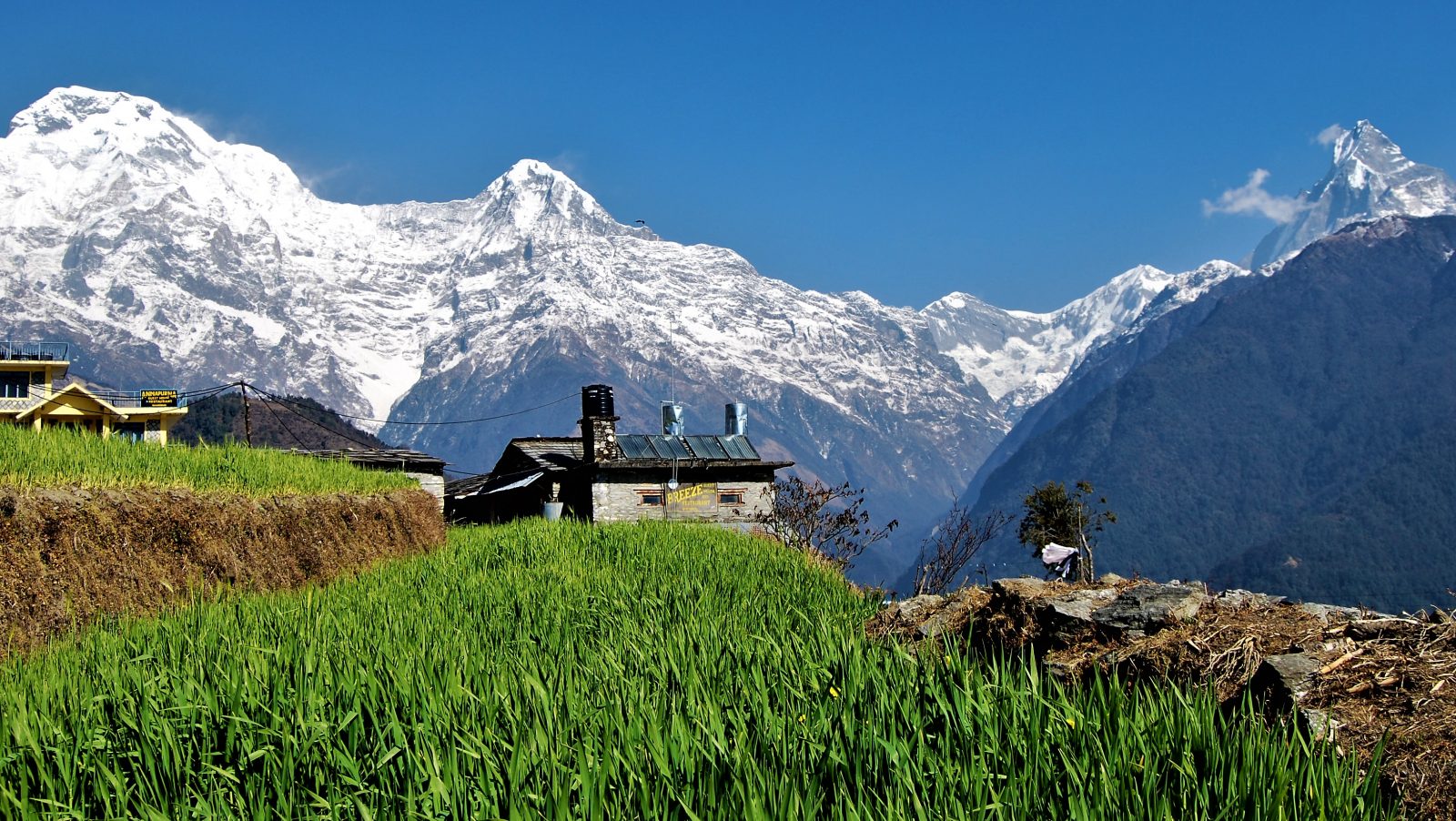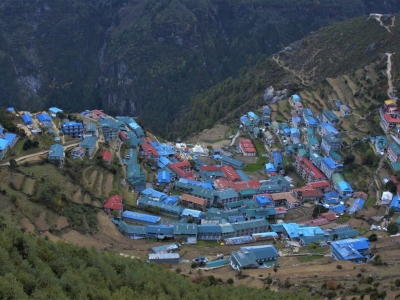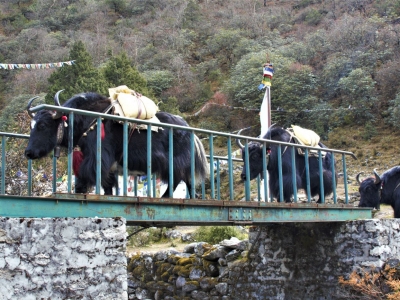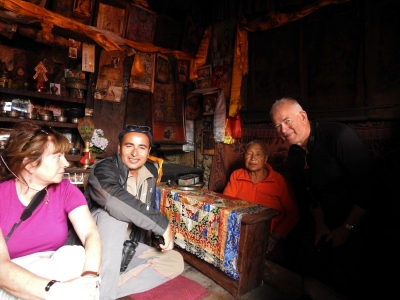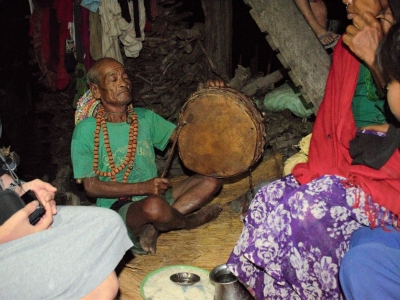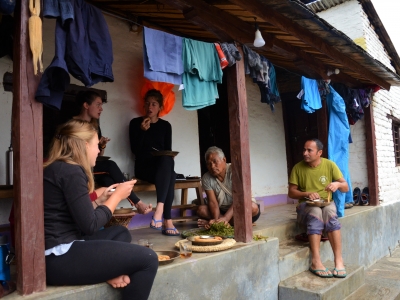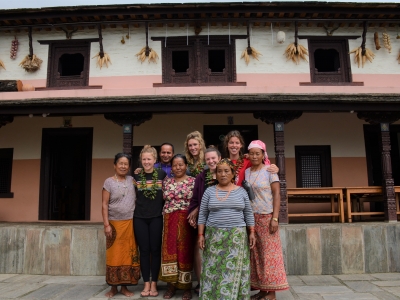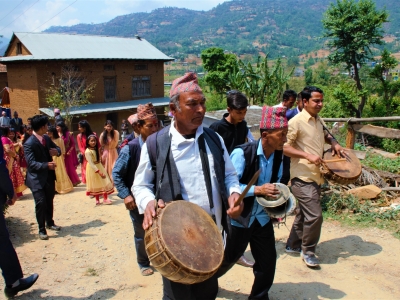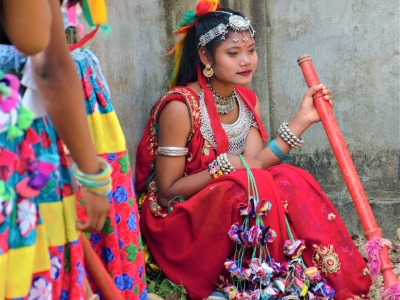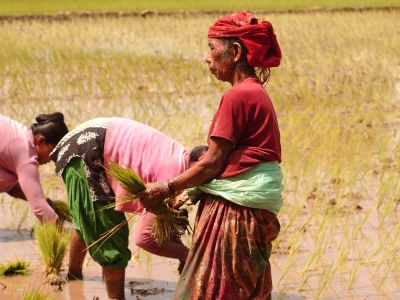About Nepal
The Federal Democratic Republic of Nepal is a nation between China’s Autonomous Tibet to the north and India to the South, East, and West. Nepal is the only nation in South Asia that was never colonized by any foreign power. The written history of the country, Kathmandu valley, goes back to the 2nd century AD.
However, the history of modern Nepal began its evolution in the sixteenth century with the founding of the House of Gorkha by Dravya Shah in 1559 AD. And in 1769 King Prithvi Narayan Shah, the ruler of Gorkha, unified the petite kingdoms, including Kathmandu valley, laying the foundation of modern Nepal. By 1814 AD Nepal was stretching through the Himalayas up to Sutlej River in the west and Tista River in the east. The expansion drive brought Nepal into conflict with the British East-India Company, resulting in the Anglo-Nepalese war from 1814 – to 1816. The wars lead to the treaty of Sugauli thereby bringing Nepal to its present size and border. Nepal had been ruled by Shah kings until 2006 when an uprising ousted the then King Gyanendra Shah declaring Nepal a Federal Democratic Republic. The new federal constitution was promulgated in 2015.
Nepal has always been an independent country, lying between the Tibetan autonomous region of the Peoples’ Republic of China in the north and India in the east, south, and west respectively. The length of the kingdom is 885 kilometers from east to west, and its breadth varies from 145 kilometers to 241 kilometers from north to south. The total area is 147,181 sq. kilometers. The geographical setting of the country varies from the Tropical Tarai plains to the peak of “SAGARMATHA” Mt. Everest (8848m). Nepal is proud to be the home of eight of the 10 highest peaks in the world. On the basis of topography, the country can be divided into three main regions.
A. Himalayan Region: The Himalayas cover about 19 % of the total land of Nepal but only 2 % of the land is suitable for cultivation. The altitude of this region ranges from 1600 ft- to 29035ft (1877m – 8848 m.) It includes 8 of the highest 14 summits in the world which exceed an altitude of 8000 meters.
B. Hilly Region: This region is very extensive and covers about 64 % of the total area of which only 10 percent is under cultivation. The average range of this region falls between 1000 ft (1300m) to 15000 ft (4500m.) in altitude. Almost 50 % of people and diverse ethnic groups inhabit the hills. Wild animals are to be found here. This region is also popular for different kinds of birds.
C. Tarai Region: The Tarai region stretches east to west with fertile low land plains in the southern part of the country. This belt occupies about 17% of the total area. It provides excellent farming flat land is 60 to 300 m (200 ft – 1000 ft) above sea level. Because of its fertile soil, it is known as the “Granary” of the country. Royal Bengal tiger, one-horned rhino, leopard, gharial crocodile, wild elephant, many species of birds, and different types of venomous snakes are found here.
Nepal is one of the richest countries in terms of cultural diversity in the world. Its population of more than 29.3 million, contains a complex mixture of different ethnic groups, each with its own distinctive lifestyle and cultural flavor. The Gurungs and Magars live mainly in the west and on the southern slopes of Annapurna, Himalchuli, and Ganesh Himal. The Rais, Limbus, and Sunuwars inhabit the eastern mountains. The Sherpas, “the Tigers of the Snow” live in the Himalayan region up to an altitude of 1 5,000 ft. The Newars constitute the most important ethnic group in the Kathmandu Valley. There are Tharus, Yadavas, Satars, Rajvamsis, and Dhimals in the Tarai region. The Brahmins, Kshatriyas, and Thakuris inhabit most parts of the Kingdom. All these races and tribes live together peacefully to form an integral whole. They are tied up together by their common ideals of peace, democracy, and nationalism.
Language:
The last census (2001) recorded 100 ethnic categories with over 92 languages. There are 59 officially identified ethnic groups, of whom only 42 are covered by the census report. Nepali, which is written in the Devnagari script is recognized as ‘the language of the nation’ as well as the official language, is spoken by nearly half of the population (48.61%), and is also a lingua franca among various communities of Nepal.
Nepal’s topographical extremities govern the climate condition of Nepal. Tropical, Temperate, and tundra types of climate are respectively encountered in its Tarai belt, midland hills, and the alpine region. Therefore people say migrating birds do not have to leave Nepal. Nepal’s weather is generally predictable and pleasant.
The year is divided into 4 different seasons in Nepal – winter, spring, monsoon, and autumn. The best period to visit the country for plant lovers is during spring when the flowers are in full bloom. The mountain slopes are covered with beautiful and colorful flowers. The Spring season commences in early March and continues until late May. Even though the days are clear haze disturbs the mountain views. Late May, and the downpour begins. It continues till late August. Come September and the autumn season begins. It continues till late November. With a temperate climate, clear blue skies, and extraordinary mountain views it is the best season to visit the country. Winter begins in late November and continues till late February.
Religion is an integral and deep-rooted part of Nepalese life. Although Nepal is constitutionally declared secular nation, many religions are practiced here with religious fervor. A remarkable feature of Nepal is that religious and cultural coexistence exists, particularly, between the Buddhist and Brahmanical religious communities under the umbrella of Sanatana Dharma. The rich cultural heritage of Nepal can be seen in the diverse social customs and frequent socio-religious festivals, which spill into the streets and squares of the cities and villages. There is hardly a day or a place where one can not see the celebration of some sort of festival, however small. You can see that it has its root in distant history. Percentages of religions are:
A. Hindu: 66%
B. Buddhist: 27%
C. Muslim 3%
D. Others: 4%
Nowhere else in the world does the landscape change so greatly over so short a distance as in Nepal, from the mountain areas of the Himalayas, down through lush valleys, and into the tropical plains of the south. The flora and fauna, much of it indigenous, is remarkably diverse for such a small area (95). Eleven of the World’s 15 families of butterflies are represented in Nepal and 614 species have been identified. Nepal’s National Park in Terai is a habitat for endangered species like Bengal Tiger, Great One-Horned Rhino, Gaur; whereas the Himalayan National Parks are the habitat for Musk Deer, Snow Leopard, Red Panda, and more. About 10 % of the World’s Bird species are, so far, recorded in Nepal.
Affection between men and women, even married, is seldom expressed.
Public kissing, hugging, and hand-holding are offensive to most Nepalese and a sign moral. But it is acceptable for two men to walk hand in hand.
Anger is best not expressed openly. It causes you and the person you’re mad at lose of the face.
Baksheesh is an extra payment for a service performed and is usually given to porters or laborers at the end of the job. It can be money or clothes or anything else and there is no set rate.
Bargaining is to be expected.
Don’t bargain if you’re not really interested. If your price is accepted, don’t try to back out, and don’t try to get an even lower price.
Bathing in the hills is very conservative. Men should wear shorts; women should wear a lungi pulled up under the arms.
Children are spoiled crazies. Don’t be surprised if you are the center of attraction everywhere.
Clothing is conservative. Men should not go bare- chest and shorts should be conservative. Women should avoid bare shoulders halter tops, and shorts. Ties and suits are not necessary except for special occasions.
Conversations may have ‘dead’ patches. Nepalese are not uncomfortable with silence.
Cows are sacred. They go and sleep where they want. Watch out for them if you must stretch them out while sitting on the floor. Never step over anyone, and always move your feet let people avoid stepping over you.
Gifts are rarely given and seldom opened in front of the person who has given it.
Heads are sacred and should be treated with respect. Never should be treated without respect. Never take who has given it and never take a topi (hat) off a man’s head, even in fun.
Invitations often arrive at the last moment. Don’t be surprised or offended, it happens to everyone. If you’re busy, even a short appearance is enough.
Jutho (impurity) refers to food that is ritually polluted and therefore inedible; any food which has come into contact, either directly or indirectly with the month becomes jutho.
Left hands are used for cleaning oneself after going to the toilet. It is never used to pass or accept things, whether food at the table or money from a shopkeeper.
Nepal has more festivals than the number of days in a year. A festival is always a meaningful and memorable event in the life of Nepalese people. Every festival has some purpose to serve. From bringing in the rain to honoring the dead or averting calamities, every festival has something spiritual about it. Festival is a way of life in Nepal. With the number of festivals that Nepal has, it is one of the best ways to understand and appreciate the Nepalese ways of life. The dates of Nepali festivals are according to the lunar calendar. Hence the date of festivals varies from year to year. Some of the major festivals of Nepal are:
April
New Year’s Day: – (First day of Baisakh)
Matatirtha Aaunsi :- (Mother’s Day)
Buddha Jayanti:– Celebrating the birth of Lord Buddha Shakyamuni in Lumbini
Ghodejatra:- Known as the festival of horses takes place at Tundikhel on this day.
May
Rato Machhendranath Rath Jatra:- The festival of Lokeshwara, one of the patron Gods of Kathmandu. A 40-foot tall chariot with God’s image installed is pushed and pulled through the streets by hundreds of worshippers.
Kumar Sasthi:– A celebration of the birth of the Hindu warrior God Kumar marks the beginning of the rice planting season. It’s also celebrated by groups of boys who indulge in stone-throwing fights.
June
No major festivals in the monsoon season.
July
Ghanta Kharna :- A festival commemorating an ancient victory over a particularly malevolent devil, Gathemuga. Mock funerals are held and figures burned in effigy.
August
Guru Poornima :– Teacher’s Day
Naga Panchami :– A festival devoted to the snake gods, who most Nepalese believe ruled the Valley before the coming of people.
Janai Purnia :– The festival of changing the sacred thread which every Brahmin caste Hindu male wears around his torso.
September
Gaijatra(Cow Festival):– A festival for the sacred cow. Among other symbolisms of the cow, cows are believed to lead the souls of the dead to the underworld; and on Gaijatra Newar households process around an ancient path believed to mark the city walls of times past, in honor of recently deceased members of their families. It’s also a carnival celebration with practical jokes – something like Mardi Gras combined with April Fool’s day.
Krishna Asthami :– Celebrating the birth of the Hindu God Krishna, one of the incarnations of Lord Vishnu.
Gokarna Aunsi :– Father’s Day
Indra Jatra :– This festival officially begins with the raising of a 50-feet tall ceremonial pole at Hanuman Dhoka Durbar Square in Kathmandu. A weeklong traditional display of old images of Akash Bhairavs is one of the highlights of this festival. In the ceremonial pulling of the rath (chariot) of the Kumari, the chariots of Ganesh and Bhairav accompany the Virgin or Living Goddess.
October
Bada Dashain :– The biggest and most widely celebrated national festival in Nepal, usually falls in early October. It begins with Ghatsthapana. Of the two full weeks of celebrations, the 8th, 9th and 10th are the most eventful and auspicious days. The main deity worshipped during Dashain is Goddess Durga. On the 9th day, thousands of devotees visit important Durga temples to worship her. The tenth day is climax day. People visit to seniors for Tika (blessings). The ministers, high-ranking officials, general public queue to get Tika from their Majesty in Royal Palace.
November
Tihar :– It is also known as Diwali or Deepavali, is the festival of lights in Nepal. The celebrations continue for five days. It is an annual festival celebrated in the bright blue days of autumn. The festival begins with the worship of crows, followed by the worship of dogs on the 2nd day. On the 3rd day, Laxmi, the goddess of wealth, is worshipped. On the 5th day, one’s own soul is worshipped. Sisters also worship their brothers on this day. This is called Bhai Tika, and is a great day and the grand finale to Tihar.
Constitution Day :– The new democratic constitution of the Kingdom of Nepal was promulgated on November 9, 1990. since then, this day is observed as Constitution day.
Dhanya Purnima :– A full moon festival celebrating the end of the rice harvest.
Mani Rimdu :– It is one of the most fascinating High Himalayan Buddhist festivals observed every year, usually in November. Tengboche, the world’s highest monastery located in Solu-Khumbu district of Nepal, is the focal point for the celebration of this festival. The main attraction of this festival is the various masked dances of religious significance.
December
Seto Machhendranath :– A cleansing ritual for the White (seto) Machhendranath, a counterpart god to the Red (rato) Machhendranath who’s chariot procession is in April-May.
January
Prithivi Jayanti :– This festival is celebrated in honor of King Prithvi Narayan Shah, the founder of Modern Nepal, with a colorful ceremony in front of the Singh Durbar Gate in Kathmandu.
February
Losar :– It is one of the greatest festivals of significant importance to the Sherpas and peoples of Tibetan origin. It is celebrated every year in February. The focus of this festival centers around the celebration of the Tibetan New Year. Many fascinating rituals and celebrations may be observed in Boudha and in Tibetan settlements such as the Tibetan Refugee Camp at Jawlakhel, Patan.
National Democracy Day :- This day is officially observed as Rastriya Prajatantra Divas or National Democracy Day ( it generally falls on February 18th i.e. 7th of Phalgun as a mark of respect to the people’s revolution of 1950 – 51.
March
Shiva Ratri :– Shivaratri or the night of Lord Shiva, is observed in March. It is celebrated to smoke marijuana in the honor of Lord Shiva. A great religious fair takes place in the Pashupatinath Temple and thousands of people from all over Nepal and India visit the temple.
